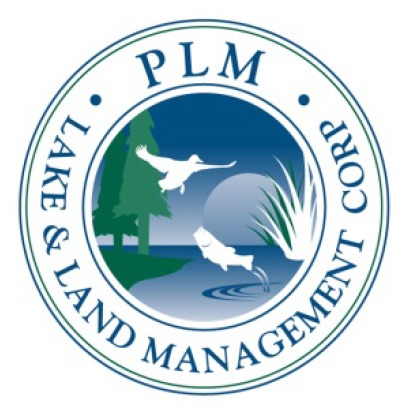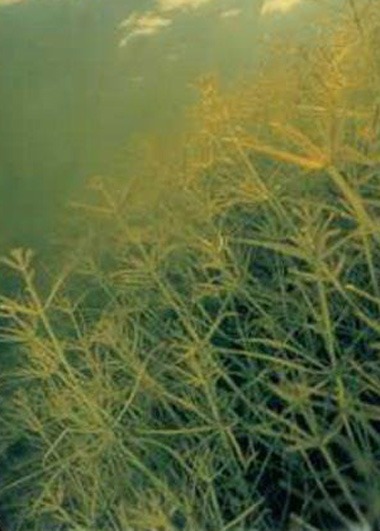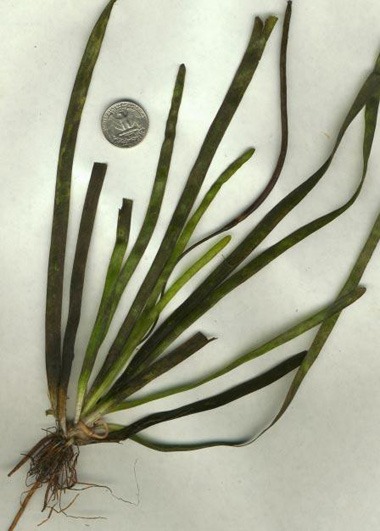With Clark Lake’s invasive species, it’s another case of good and bad news. Which would you like first?
You said good news, right? Okay, let’s start there. PLM, the company employed to control Clark Lake’s invasive weeds, has issued their final report for 2020. PLM’s Steve Hanson says “the past two seasons have been a great success in controlling the hybrid milfoil [HEWM] and overall, the lake is in great shape.” There is a caveat, or bad news—Starry stonewort. Stay tuned for more on that.
For PLM’s deeper dive into the weeds, please click here.
 Some background: PLM says the “introduction of the exotic invasive species, Eurasian water milfoil [HEWM], most likely went unnoticed for several years. The majority of the HEWM [was] located in deeper (8-12 feet) [water] with very few pockets in near shore areas.” Residents found the hybrid Eurasian water milfoil threat was growing rapidly. Lakes that didn’t control this invader found boating, fishing and other recreational uses adversely affected— and property values diminished. Clark Lake’s lakefront property owners petitioned Columbia Township to form a special assessment district (SAD) to thwart the problem.
Some background: PLM says the “introduction of the exotic invasive species, Eurasian water milfoil [HEWM], most likely went unnoticed for several years. The majority of the HEWM [was] located in deeper (8-12 feet) [water] with very few pockets in near shore areas.” Residents found the hybrid Eurasian water milfoil threat was growing rapidly. Lakes that didn’t control this invader found boating, fishing and other recreational uses adversely affected— and property values diminished. Clark Lake’s lakefront property owners petitioned Columbia Township to form a special assessment district (SAD) to thwart the problem.
After PLM’s first lake survey in fall 2014, several HEWM control endeavors followed. They were moderately successful. When a different product was applied in 2019, the results spoke for themselves. By 2020 HEWM was mostly gone. Only a couple small areas required follow up this summer.
What about other aquatic weeds? Some residents spotted native weeds during the active growing season and wondered if they were part of the invasion. The answer is generally, “no.” PLM’s report states native plants perform “such functions as stabilizing sediments and providing habitat for fish and other aquatic organisms. In general, native species cause few problems, compared with those caused by exotic plants. Three species commonly found in higher densities on Clark Lake are chara, Illinois pondweed and wild celery.”
What if native weeds are creating havoc at your dock? PLM’s current Clark Lake permit covers treatment of invasive species only. Steve Hanson adds, “If residents who have legitimate native plant issues were interested in contracting PLM directly, we may be able to apply for an additional permit to perform limited native plant control.” Click here for the PLM website.
Now, the bad news.
Two summers ago starry stonewort was detected in the lake. Two hot spots included the Eagle Point Marina boat launch and near the County Park (east end). PLM defines starry stonewort as “a macro-algae and is in the same family as Muskgrass (Chara), but is considered to be an exotic invasive species.” The algae looks like chara (char is considered good for the lake). But the story on starry stonewort takes a nasty turn. Starry stonewort “forms dense mats, but unlike chara, it can grow from 5 to 7 feet tall. Starry stonewort can be very detrimental to a lake’s ecosystem and has the ability to kill off native plants and have a negative impact on a lake’s fisheries.” If you have ever seen starry stonewort out of control, your description might be more vivid than that. Starry has turned some lakes into disaster areas. PLM concludes, “conditions in Clark Lake should not be allowed to deteriorate below present levels.”
The war on invasive species is not over. Boats from elsewhere visiting Clark Lake raise the probabilities of new introductions. For example, if a fishing boat has been in an infected lake and then launches into Clark Lake, it may bring bad news with it.
 Weeds hanging on a boat trailer could be invasive and may find their way into Clark Lake.
Weeds hanging on a boat trailer could be invasive and may find their way into Clark Lake.
PLM also surveys water quality. That report will appear on this website soon.
This story should not close without recognizing the Clark Lake residents who took up the fight to control invasive species starting in 2014. They tirelessly researched options to rid the lake of HEWM. At one point, it became necessary to establish an SAD to ramp up the fight. The same volunteers went door to door with petitions. In the end, they were able to contact 70% of lakefront property owners. Of those, 95% signed the petition in favor of treatment.















As is said, it takes a village. And Clark Lakers have always met the challenges head on. I don’t see that changing.